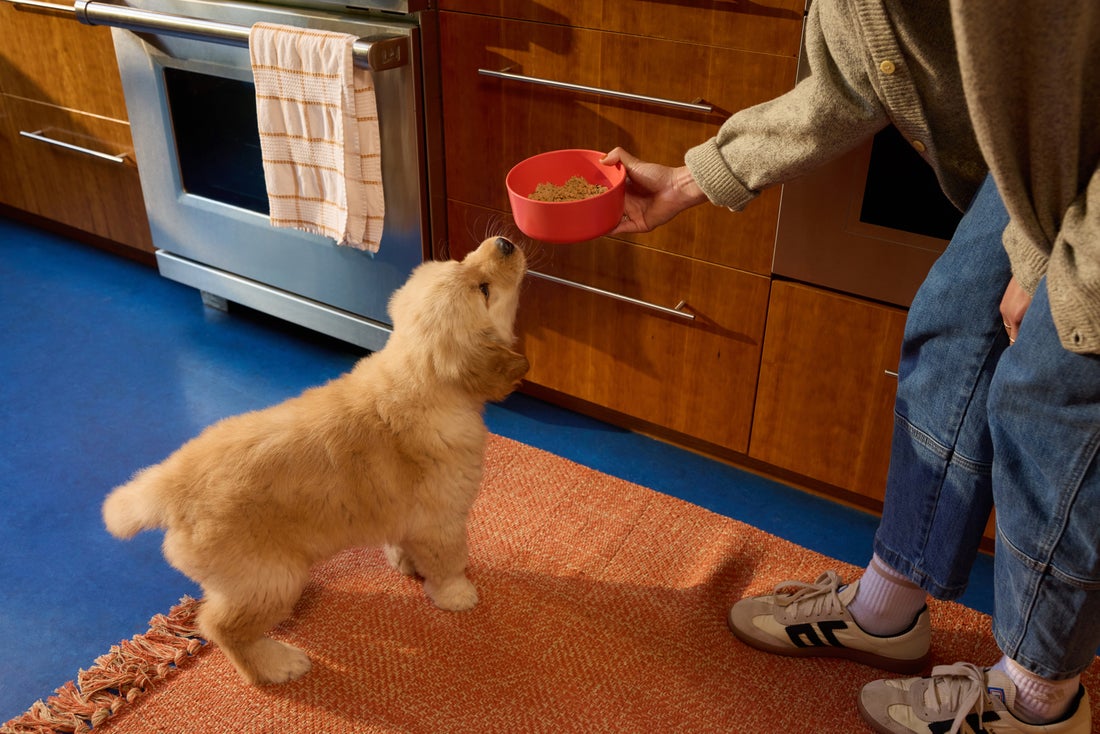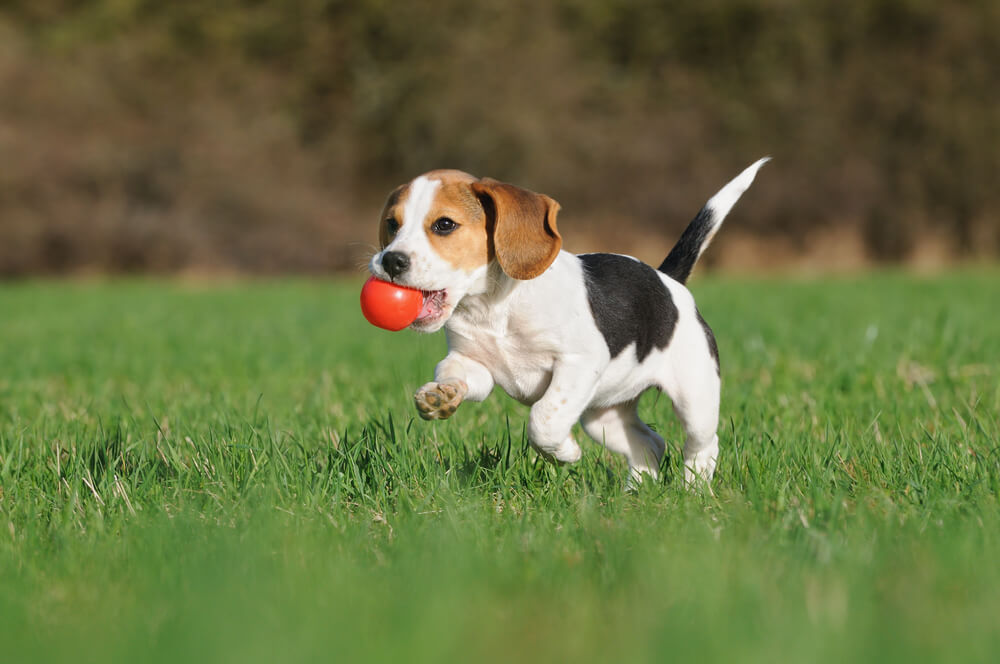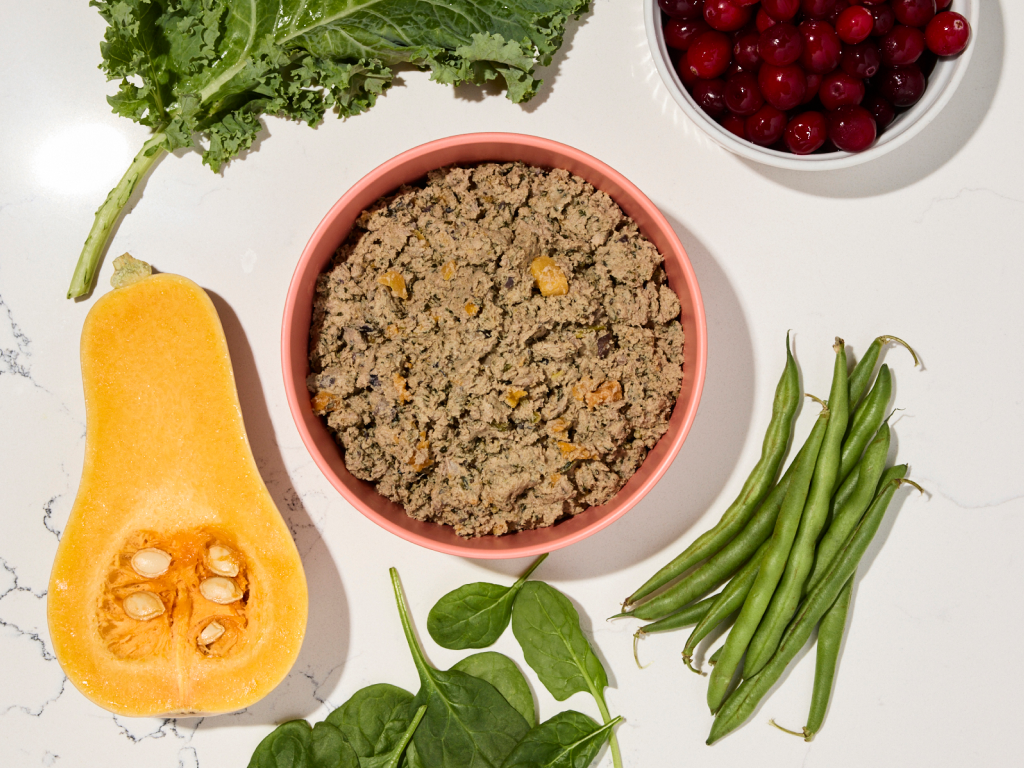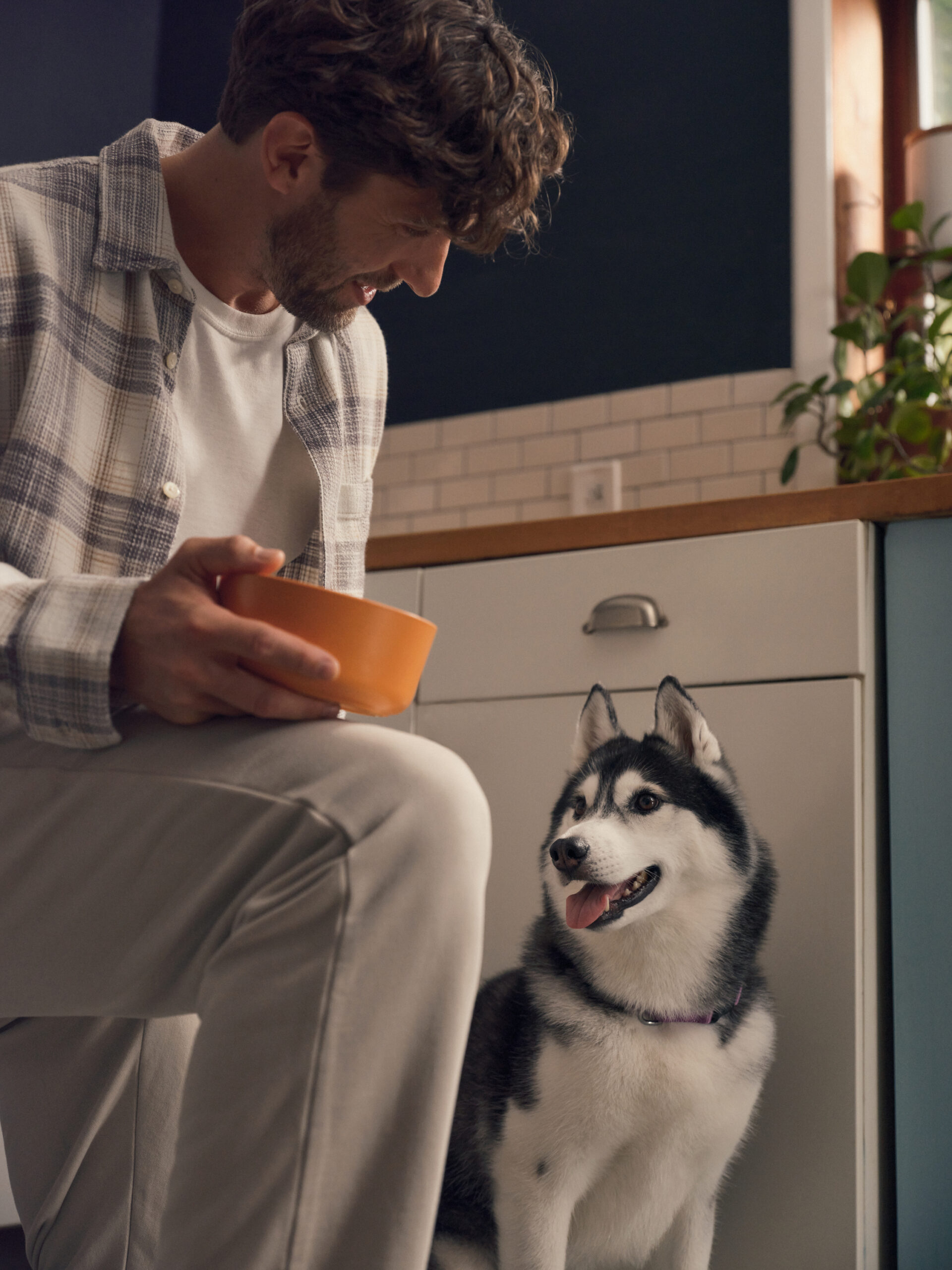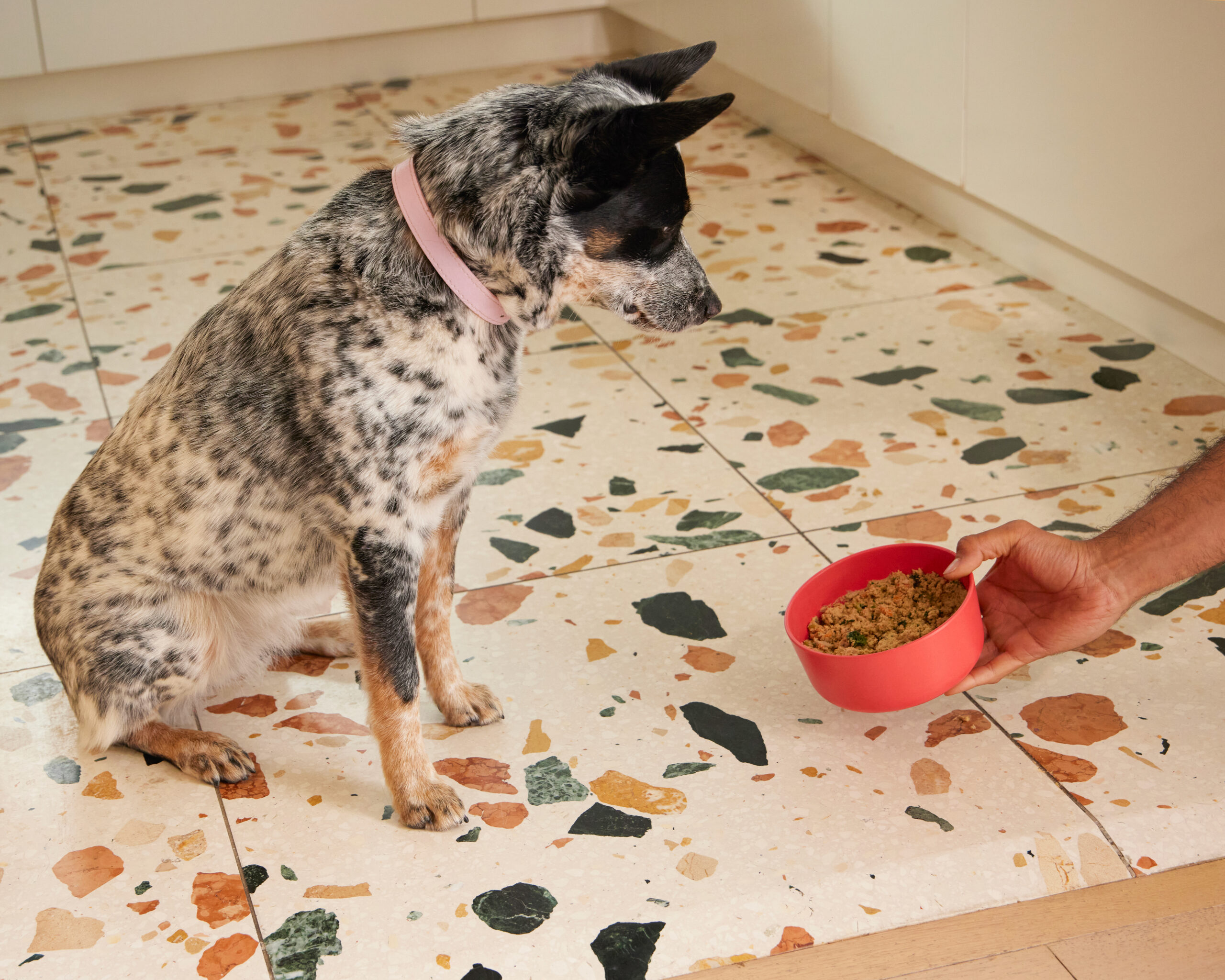Hey Ollie blog readers! We’re offering you an exclusive 60% OFF your starter box! Try now!
We don’t always think about dog digestion—until something goes wrong. A sudden bout of diarrhea, weird-smelling gas, or stools that just don’t look right can spark a million questions. But even when everything seems normal, your dog’s digestive system is doing a lot behind the scenes.
Digestion isn’t just about breaking food down. It’s about how well your dog absorbs the nutrients in that food, and whether those nutrients are actually helping them thrive. That’s where something called dog food digestibility comes in.
Think of it this way: If your dog eats a bowl of food but only absorbs half the nutrients, they’re not getting the fuel they need, no matter how full they seem afterward.
Some foods pass through quickly with little benefit. Others stick around just long enough to cause irritation. And some, like Ollie, are designed with digestibility in mind, using real ingredients your dog’s body can actually recognize and use.
In this guide, we’re digging into everything you should know about the dog digestion system:
- How it works
- What affects how your dog digests food
- Signs of poor digestion
- And how to support your pup with food that does more than just fill their belly
Understanding the Dog Digestive System (Step-by-Step)
Your dog’s digestive system might not look like much from the outside, but inside, it’s a fast-moving, highly specialized process built for one thing: breaking down food into usable fuel.
Let’s walk through the stages of digestion to see how your dog’s body works through a meal:
Step 1: The Mouth
Digestion starts the moment your dog takes a bite. But unlike humans, dogs don’t chew for long. Their teeth are designed more for tearing and gulping, not grinding.
And their saliva? It doesn’t contain digestive enzymes like ours. It’s mostly used to lube the food for swallowing.
Step 2: The Stomach
Once swallowed, food moves into the stomach, where things get serious. Your dog’s stomach is highly acidic, with a pH as low as 1. This helps quickly break down meat and bone and kill off potential pathogens.
Within 4 to 6 hours, that food is liquified and pushed into the small intestine.
Step 3: The Small Intestine
This is where most nutrient absorption happens. Enzymes from the pancreas and bile from the liver break down proteins, fats, and carbs.
If your dog’s food isn’t digestible, if it’s loaded with fillers, overcooked proteins, or artificial ingredients, this is where absorption breaks down.
Step 4: The Large Intestine (Colon)
Whatever isn’t absorbed moves here, where water is extracted and gut bacteria help ferment any leftover fibers. A healthy colon produces well-formed, easy-to-pass stool.
Fun fact: On average, it takes 8–12 hours for a dog to fully digest a meal, depending on size, age, and what’s in the bowl.
Why It Matters:
If any part of this system is stressed or overloaded, your dog’s digestion can suffer, leading to gas, loose stools, or poor nutrient uptake. That’s why feeding meals made with digestible, real ingredients, like Ollie, can make such a visible difference in how your dog looks and feels.
What Is Dog Food Digestibility and Why Does It Matter?
Not all dog food is created equal. Some recipes may look complete on the label but pass right through your dog without offering much real nutrition. That’s where digestibility comes in.
Digestibility refers to how much of the food your dog eats actually gets absorbed and used by the body. It’s not just about what goes into the bowl, it’s about what your dog’s body can break down and turn into fuel, protein, and nutrients.
For example:
- If a food has 85% digestibility, that means 85% of the nutrients are absorbed and used
- The remaining 15% becomes waste, often seen as larger or more frequent stools
Diets made with high-quality, minimally processed ingredients often reach 90% digestibility or more. On the other hand, highly processed kibble with fillers and meat meals may drop closer to 60–70%.
Why it matters for your dog:
- Better digestion means fewer stomach issues and firmer stools
- Higher nutrient absorption means more energy, better coat quality, and stronger immunity
- Less waste means less mess and more value in every meal
That’s why at Ollie, we focus on real, gently cooked ingredients your dog can actually use. Our recipes are formulated by vets and tested for digestibility to make sure your pup gets the most out of every bite.
Signs of Poor Digestion in Dogs
Your dog can’t tell you when something’s off with their digestion, but their body usually will. If you’re seeing changes in appetite, poop, or energy, it could be a sign that their food isn’t being digested properly.
Here are common red flags to look for:
1. Loose or Frequent Stools
If your dog is having more than two or three bowel movements per day, or if their poop is consistently soft, it might mean their body isn’t absorbing nutrients well.
2. Excessive Gas
All dogs pass gas, but constant bloating or strong-smelling farts can signal that food is fermenting in the gut instead of being digested properly.
3. Mucus or Undigested Food in Poop
Visible pieces of food or a slimy coating on the stool often point to inflammation or poor breakdown of ingredients.
4. Fluctuating Appetite
If your dog seems interested in food some days but avoids it on others, they might be dealing with discomfort or nausea from digestion issues.
5. Dull Coat or Skin Irritation
Digestive health is closely linked to skin health. A lack of essential nutrients, like omega-3s or amino acids, can show up in dry skin, itching, or a dull coat.
6. Low Energy
When nutrients aren’t being properly absorbed, dogs can seem sluggish, even after a full meal.
Ingredients That Support Healthy Dog Digestion
When it comes to dog digestion, the quality of ingredients matters just as much as what nutrients are included. Some foods are easier to digest, while others pass through the system without doing much good, or worse, causing irritation.
Here’s a breakdown of what helps and what to avoid when looking for gut-friendly dog food.
Ingredients That Are Easy to Digest
Lean animal proteins
Chicken, turkey, beef, and lamb provide essential amino acids and are naturally digestible when gently cooked.
Pumpkin and sweet potato
These starchy vegetables are rich in fiber and easy on the stomach. They help regulate bowel movements and support beneficial gut bacteria.
Eggs
Eggs are a gold-standard protein. They’re highly bioavailable, which means your dog’s body can absorb most of the nutrients inside.
Bone broth
Packed with natural collagen and amino acids, bone broth supports gut lining and adds moisture to meals.
Brown rice or quinoa
When cooked properly, these grains can be a good source of energy and fiber for dogs that tolerate grains well.
Fish oils and flaxseed
These offer anti-inflammatory omega-3 fatty acids, which help reduce gut inflammation and support nutrient absorption.
Ingredients That Can Disrupt Digestion
Meat meals and animal by-products
These are heavily processed and can be harder for your dog to break down, especially if their system is sensitive.
Corn, soy, and wheat
Common fillers that offer little digestible nutrition and can trigger sensitivities in some dogs.
Artificial preservatives, dyes, and binders
These can inflame the gut and disrupt the natural balance of bacteria in the digestive tract.
Carrageenan, gums, and thickeners
Used to bulk up processed foods, these ingredients can lead to loose stools and bloating.
At Ollie, we skip the fillers and stick with real ingredients your dog’s body can actually use. Our gently cooked recipes use fresh meat, produce, and healthy fats, all balanced for maximum digestibility and long-term wellness.
Take The Ollie Food Quiz Today!
The Role of Gut Bacteria and Prebiotics
Your dog’s gut is home to billions of bacteria—some helpful, some not. When the balance is right, these microbes play a big role in digestion, nutrient absorption, and even immune health.
This internal ecosystem is called the gut microbiome, and it’s more important than most people realize.
Why Gut Bacteria Matter
Healthy gut bacteria help:
- Break down food more efficiently
- Produce vitamins like B12 and K
- Prevent harmful bacteria from overgrowing
- Support a stronger immune response
- Keep bowel movements regular and well-formed
When that balance gets thrown off, by stress, illness, antibiotics, or low-quality food, digestion suffers.
How Prebiotics and Probiotics Help
Prebiotics are a type of fiber that feed the good bacteria already living in your dog’s gut. Probiotics are live beneficial bacteria added through supplements or food.
Together, they support a healthy, diverse microbiome.
Common natural sources:
- Prebiotics: Sweet potatoes, pumpkin, chicory root
- Probiotics: Fermented ingredients like yogurt (in small, dog-safe amounts) or vet-approved supplements
How Ollie Supports Gut Health
Ollie recipes are packed with naturally prebiotic-rich ingredients like sweet potatoes and carrots. Our fresh cooking method also avoids the kinds of additives that can throw off bacterial balance. Every meal is built to be both easy to digest and gut-friendly—right down to the fiber blend.
Want to take it a step further? Ask your vet about adding a high-quality probiotic supplement if your pup has had tummy trouble or has recently been on antibiotics.
How to Improve Your Dog’s Digestive Health
If your dog deals with frequent tummy troubles or inconsistent poops, there’s a lot you can do to support better digestion, starting with small, steady changes at home.
Here are steps that make a real difference:
1. Switch to Highly Digestible Food
Feeding food that’s rich in real, whole ingredients (and low in fillers) helps your dog absorb more nutrients with less stress on their gut.
Ollie fresh meals are made with high-quality animal proteins, nutrient-dense veggies, and no artificial junk, making them easier to break down and absorb.
2. Make Dietary Changes Gradually
Rapid changes in food can lead to stomach upset. When switching to a new diet, do it over 7–10 days by gradually mixing in more of the new food each day.
3. Stick to a Regular Feeding Schedule
Feeding your dog at the same times each day supports consistent digestion and helps avoid bloat or gassiness from irregular meals.
4. Offer Proper Hydration
Digestion relies on water to move nutrients through the system. Make sure your dog always has access to clean, fresh water,and if they eat dry kibble, consider adding moisture through broth or switching to wet or gently cooked food.
5. Limit Table Scraps and Overfeeding
Too many extras (especially greasy or spicy foods) can throw off your dog’s gut balance and lead to gas, diarrhea, or worse. Treats are fine in moderation—just make sure they’re simple and easy to digest.
6. Monitor Poop and Energy Levels
Your dog’s poop tells you a lot. Watch for changes in size, color, texture, or frequency. If something seems off for more than a couple days, check in with your vet.
7. Ask Your Vet About Probiotics
Some dogs benefit from a daily probiotic to help maintain healthy gut flora, especially if they’re recovering from illness, antibiotics, or digestive flare-ups.
FAQs About Dog Digestion and Digestibility
How long does it take for a dog to digest food?
Most dogs digest a meal in 8 to 12 hours, though this depends on their size, age, activity level, and the type of food. Fresh, lightly cooked meals like Ollie often digest more efficiently than heavily processed kibble.
What are signs that my dog isn’t digesting food well?
Watch for loose stools, gas, frequent diarrhea, mucus in poop, low energy, or undigested food in their waste. These may all point to poor digestibility or food sensitivity.
Do older dogs have a harder time digesting food?
Yes. As dogs age, their metabolism slows, and their digestive system may become more sensitive. Senior dogs benefit from easily digestible proteins and fewer ingredients that stress the gut.
Is kibble harder to digest than fresh food?
Generally, yes. Many kibbles are made using high heat and include fillers like corn or soy, which are tougher to digest. Fresh food—especially gently cooked meals made with whole ingredients, tends to be more bioavailable, meaning your dog gets more out of every bite.
What’s the best food for dogs with sensitive digestion?
Look for meals with limited ingredients, high-quality animal proteins, and whole vegetables. Avoid artificial additives, binders, and by-products. Ollie Fresh Dog Food Recipes are a strong choice for dogs with sensitive stomachs or inconsistent stools.
Tagged As:
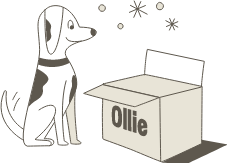
The nutrition your dog needs,
the food they want.

Enjoying our articles? Subscribe our Newsletters and get new articles directly to your inbox
You might also like
2 July 2025
5 MINS READ
Upgrade Your Dog’s Bowl: The Truth About Premium Food Quality
Every pup parent wants the best for their dog, but choosing the right food for your dog can be overwhelming. With so many options, how do you know what truly makes a food “premium”? The answer lie…
by Serena
2 July 2025
5 MINS READ
Why Top Vets Recommend Premium Dog Food with Real Ingredients
A longer, healthier life starts with the right nutrition. The quality of your dog’s food can directly impact everything from energy levels to immune function. As more pet parents seek out the be…
by Serena
2 July 2025
6 MINS READ
Top Dog Food Options for Allergies That Truly Make a Difference
If your dog is constantly scratching, dealing with upset stomachs, or battling recurring ear infections, food allergies might be the culprit. Finding the right food for allergies can be a game-cha…
by Serena
